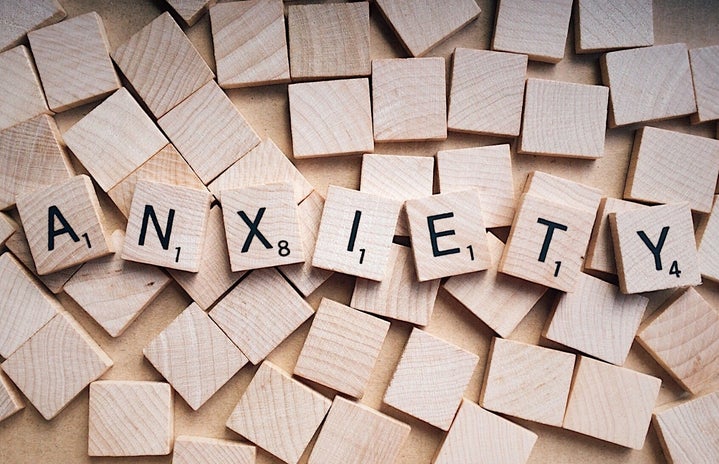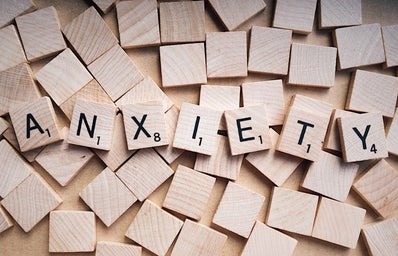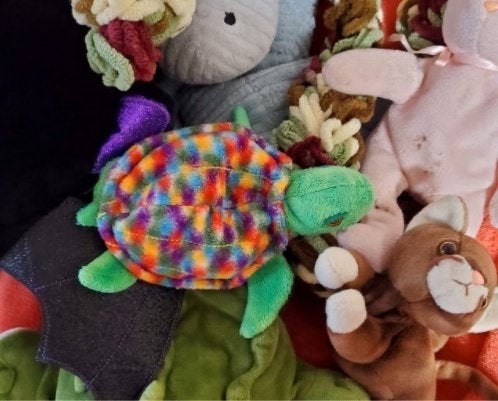
My grandpa used to make fun of me for carrying around a ratty little stuffed animal that I’ve had since I was a baby. He told me that I was too old for stuffed animals, especially ones that had most definitely seen better days. He meant well, but the idea of giving up something comforting to me was terrifying.
Soft things bring me comfort. I’ve always loved blankets and stuffed animals. I bury myself in them to read or watch movies, cry into them after bad days, and hug them to stave off panic attacks. I worried that someday I would have to give up my stuffed animals, that I would get too old for them like my grandpa said I already was. But I’ve realized that stuffed animals aren’t just toys for little kids, they have a genuinely positive impact on my mental health.
In the past few years, I have been diagnosed with anxiety and an obsessive-compulsive disorder. The diagnoses were new, but the symptoms have been there for as long as I can remember. Having names for my mental illnesses encouraged me to look for better ways to handle them. Fidgets were highly recommended to alleviate anxiety and keep my hands busy so I could resist my compulsions. Hard plastic or metal fidgets did not appeal to me. I had an egg-shaped rock and a fidget spinner that my dad had gotten from work. Both were fun for a few minutes but quickly became boring and unhelpful. Looking for something more effective, I dug through my stuffed animal bin and pulled out a frog that I had made just after moving from near Seattle to Kansas City, one of the most stressful times of my life. I started carrying him to school to hold during lecture-based classes where my mind tended to wander to my compulsions. He was a lifesaver. The felt frog had an interesting texture and soft stuffing. His thin legs flopped around and sometimes stuck to his body. I could move his button eyes with my thumb, one eye is looser than the other. When I was having a bad day or needed to keep my hands busy, the frog came out.
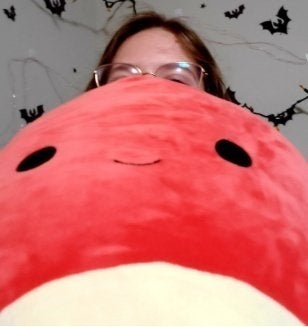
I started to notice that the frog helped other people too. They would smile at the quirky little frog with the uneven eyes and sharpie marks on his legs from where I’d outlined the shape in the sheet of fabric. Sometimes, when my classmates were having rough days, they would hold the frog for a class period. I would watch as friends who had just been crying ran their hands along the felt and poked at the button eyes, and they would begin to smile and engage with the class more and more.
That is the power of stuffed animals.
Stuffed animals are transitional objects, they help kids become more independent by giving them something comforting that is not a parent. Transition objects teach kids to self-soothe. The comforting powers of stuffed animals don’t only work for children, however.
A study by a British hotel chain found that 25% of their male guests brought a teddy bear on business trips and that holding it helped them sleep. The average British teddy bear is 27 years old, with 51% of adults still having their childhood toy. Other studies indicate that as many as 40% of adults regularly sleep with a stuffed animal. A University in Amsterdam published a study that found that touching stuffed animals helped relieve existential angst- anxiety about the purpose of life. Touch helps people feel connected and grounded during episodes of anxiety, and stuffed animals can fulfill that need.
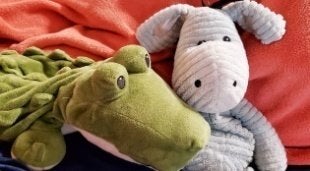
My stuffed animals keep my anxiety at bay and make me feel safe and comfortable. At night, I sleep with two microwaveable stuffed animals, a donkey, and an alligator. The warmth and lavender smell calm me down and help me sleep wonderfully. Whenever I’ve had a bad day and am ready to curl up in bed, they’re there to make it a pleasant and relaxing time, rather than a time for me to wallow in self pity or loathing. The warm stuffed animals have become such a staple of my emotional support system that my dad tells me to “nuke the donkey” whenever I’m feeling down. A large squishy octopus also helps. She fits perfectly in my lap for me to hug while calming down and watching tv. She’s soft enough that if I need to cry into a stuffed animal I can hug her tightly and she conforms to a comfortable shape, helping with my anxiety by touch. The little stuffed animal that my grandpa would love to toss in the trash is still my favorite. Every night I hold her against my chest while I sleep. She is home and safe.
Some people may, like my grandpa, not understand the power of stuffed animals, but in times so full of anxiety and existential angst, holding something soft provides much-needed comfort.
Burgo, Joseph. No Shame in Adult Comfort Dolls. 12 June 2018,
www.psychologytoday.com/us/blog/shame/201806/no-shame-in-adult-comfort-d….
Desalvo, TJ. “Stuffed Animals Help with Anxiety.” HealthyPlace, 26 Sept. 2018,
www.healthyplace.com/blogs/anxiety-schmanxiety/2018/9/stuffed-animals-he…
